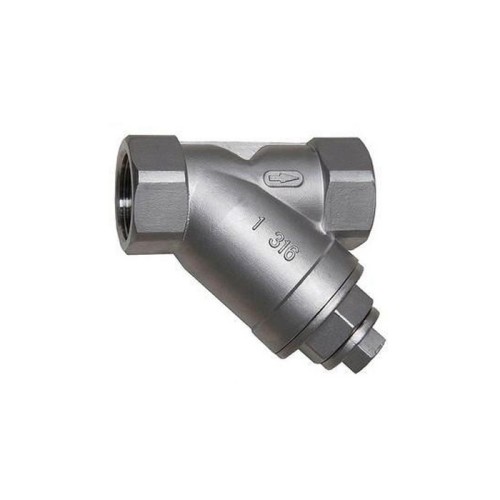hydraulic flange
Understanding Hydraulic Flanges Key Components in Hydraulic Systems
Hydraulic systems are integral to modern machinery and equipment, providing essential power and control across various industries, from manufacturing and construction to automotive and aerospace. A critical component of these systems is the hydraulic flange, a device that plays a vital role in connecting hydraulic pipes, tubes, and hoses. This article delves into what hydraulic flanges are, their types, applications, advantages, and maintenance requirements in hydraulic systems.
What is a Hydraulic Flange?
A hydraulic flange is a mechanical component that serves to connect two sections of pipe or tubing in a hydraulic system. It comprises a flat, round plate (the flange) with holes for bolts or screws that secure it to another flange. The connection created by hydraulic flanges allows for the transmission of hydraulic fluid under pressure, making them essential for the efficient operation of hydraulic machinery.
Types of Hydraulic Flanges
There are several types of hydraulic flanges, each designed for specific applications and systems. The most common include
1. Flat Face Flanges These flanges have a flat surface allowing for a tight seal when joined. They are often used in systems where high pressure is expected.
2. Raised Face Flanges Featuring a slightly raised surface, these flanges are suitable for applications requiring a more substantial sealing area, ensuring leak-proof connections.
3. Blind Flanges These are solid plates used to close off a piping system. They do not have any holes for bolts and are typically used for maintenance purposes or when a future connection is anticipated.
4. Socket-Weld Flanges Designed for systems where space is limited, socket-weld flanges are inserted into a matching socket and welded in place, providing a strong and durable connection.
5. Weld Neck Flanges These flanges have a long neck that can be welded directly to the pipe, creating a strong, robust bond that can withstand high pressures.
Applications of Hydraulic Flanges
Hydraulic flanges are used in a variety of applications across multiple industries. They are commonly found in hydraulic machinery such as hydraulic presses, excavators, and forklifts. Additionally, they are crucial in automotive systems, such as brake and steering systems, where high pressure is vital for efficient operation.
In aerospace, hydraulic flanges are critical in hydraulic actuation systems that control critical aircraft movements. In manufacturing, they are used in equipment that requires precise control of movement and force.
Advantages of Hydraulic Flanges
hydraulic flange

The use of hydraulic flanges in hydraulic systems offers numerous advantages
- Robust Connection Flanges provide a secure, tight connection, reducing the risk of leaks in high-pressure applications.
- Ease of Maintenance The design of flanges allows for easy disassembly, making maintenance and repairs straightforward.
- Versatility With various types of flanges available, they can be used in numerous applications, accommodating different pressure requirements and fluid types.
- Cost-Effectiveness While not the cheapest option, flanges offer long-term value through durability and reduced maintenance costs.
Maintenance of Hydraulic Flanges
Maintaining hydraulic flanges is crucial to ensuring the reliability and efficiency of hydraulic systems. Here are some maintenance tips
1. Regular Inspection Periodically inspect flanges for signs of wear, corrosion, or damage. Look for leaks around the connection points, which can indicate a failure in the seal.
2. Proper Torque Specifications When installing or reassembling flanges, it's vital to follow the manufacturer's torque specifications to prevent overtightening, which can cause damage.
3. Cleaning Keep flanges and surrounding areas clean. Debris or contaminants can interfere with the seal, leading to leaks.
4. Use of Proper Gaskets Always use gaskets specified by the manufacturer, as these are designed to withstand the pressures and fluids involved.
5. Monitor Fluid Conditions Regularly check hydraulic fluids for signs of contamination, which can adversely affect the integrity of the flanges and the overall hydraulic system.
Conclusion
Hydraulic flanges are essential components of hydraulic systems, facilitating the safe and efficient transport of hydraulic fluids under high pressure. Understanding their types, applications, and maintenance requirements can help ensure the longevity and effectiveness of hydraulic machinery. By paying attention to these elements, users can optimize the performance of their hydraulic systems and minimize downtime due to maintenance issues. Whether in construction, automotive, or aerospace applications, hydraulic flanges remain crucial to the reliable operation of hydraulic technology.
-
Breakthrough in Domestic Low Temperature Valve Technology in ChinaNewsAug.18,2025
-
From Machinery to Intelligent Brain: The Digital Transformation Wave of the Valve IndustryNewsAug.18,2025
-
PCVEXPO 2025NewsAug.18,2025
-
The Key to Fluid Control: Exploring the Advantages of Ball Valves in Industrial SystemsNewsJul.09,2025
-
The Versatile World of 1, 2, and 3 Piece Ball ValvesNewsJul.09,2025
-
Stainless Steel Ball Valves: The Ideal Choice for Efficient Flow ControlNewsJul.09,2025
-
Optimizing Fluid Control with Ball Float ValvesNewsJul.09,2025




